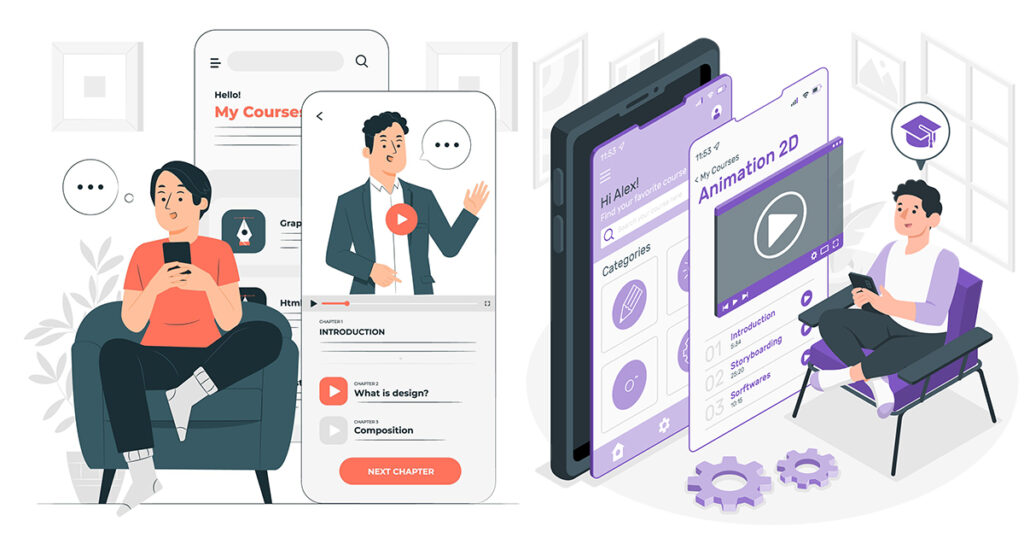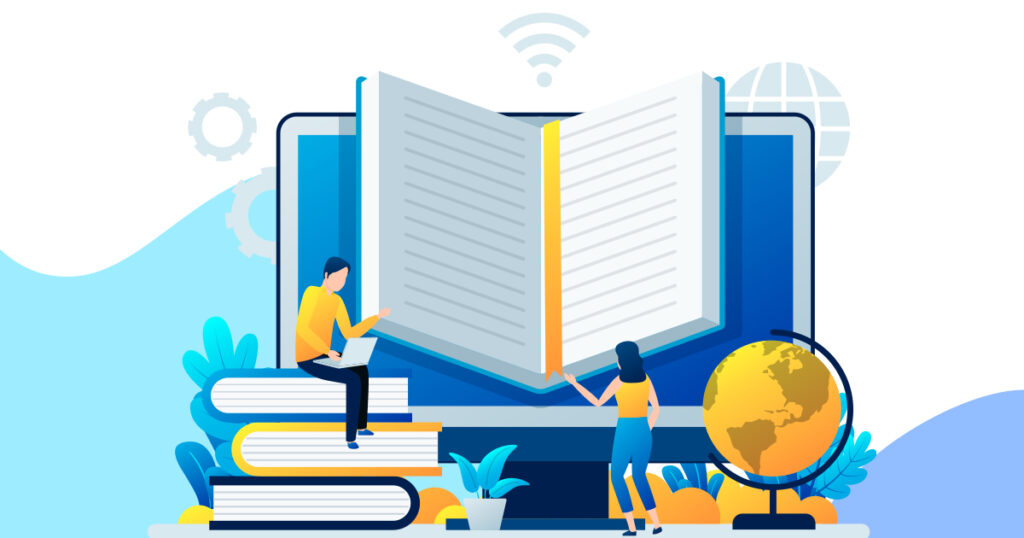
The world is increasingly becoming mobile. As technology evolves, the concept of digital learning also develops. In the technological advanced era, we have to adapt to the fast changing technological changes.
The delivery of education has advanced over time as people's lifestyles started to change and varied technologies became available. With the introduction of the internet and computers, distance learning was possible and classes were no longer confined to a building.
With the spread of technology, pupils received their learning material through laptops and computers, and eLearning came into existence. The next advancement was the introduction of mobile learning services, where learners receive their learning material on their mobile devices.
Let us first understand the meaning of Mobile and Online/eLearning in detail
Mobile learning has become a new occurrence in our lives, where we can learn from anywhere with a mobile device with an internet connection. The introduction of smartphones has changed our lives to a great extent because people can get information from anytime and anywhere.
The main drive behind this type of mobile learning solutions is to make learning easier for those who attend other traditional forms of teaching and people who are not able to stay for long hours in a classroom.
Also Read: Debunking the Top 7 Misleading Myths about Mobile Learning

Electronic learning is also called eLearning nowadays. eLearning courses are designed for people who have a good internet connection at the office or home. While mlearning uses tablets or smartphones, eLearning is not limited to tablets or smartphones.
There are varied platforms where you can access eLearning courses. These courses are generally available online.
When you try to match the online and mobile classroom teaching, the first thing that comes into your mind is learning on the computer and mobile.
If you are tech-savvy, you might have realized that you will have a lot of online collaboration tools like ezTlaks Cloud Meeting and software to make online learning to reach your friends and teachers in an instant.
This software is designed to help the applicants to use diverse tools to make learning less time consuming and more proven and effective.
Mobile learning services consist of bite sized, short micro lessons meant at quick information distribution.
The learning units are small to back a continuing learning process where students need direct access to bits of information. There are planned ways to use mobile technology for education.
ELearning on the other hand intends to deliver in-depth, comprehensive information, teach specific skills on a specific field and subject.
You can study anything from advanced data science, philosophy to physics through eLearning. For example, eLearning can be suitable when instructing learners on how to formulate organizational policies, carry lab tests, operate machines, etc. eLearning takes on a time-bound, formal and structured format of teaching.
With mlearning learning happens through tablets and smartphones, permitting learning on the go. Here the trial for the course designers is to create instructions that don?t require a lot of data to download.
With eLearning, learning happens through laptops, desktop computers, so learners are confined to their desks for learning purposes. These students have seamless access to hi-resolution images, videos and audios and have few bandwidth concerns.?
A standard mobile learning module generally lasts up is generally shorter and upto about 10 minutes. For example, video content usually does not surpass 4 minutes.
An eLearning lesson that teaches detailed information lasts typically between 20 to 30 minutes. On the other hand, mobile learning are normally short. Short learning units are ideal for mLearning as personnel don?t have time to sit down for hours to study.
Within mobile learning services, information is pooled over mobile devices, this means modules must be fine-tuned for small screens.
Mobile learning modules cannot contain media that require a lot of bandwidth or data, complex graphics or highly detailed information. Information is best aimed with simple navigation, large buttons, one idea per screen, and bite-sized modules.
With eLearning, tutors must use laptops and desktop computers to deliver course supplies.
That means that course material must be adjusted for large screens. Bigger monitors lead to improved productivity because you can see more data on one screen.
Generally, larger screens allow for live HD video streaming of lessons and come with increased resolutions. The larger screen of the computer also implies that the tutor can use whiteboards and screen sharing.
When someone is learning through the mobile learning services, she or he is mostly required to apply solutions immediately and make informed decisions.
Some modules even require only a few minutes to complete. Mobile learning has a smaller gap between application and learning of the learned material. This mode of learning is typically used by business leaders to assess employees' overall comprehension on a project idea or given topic.
With online learning, there is generally a huge time gap between application of practical solutions in tests and knowledge dissemination.
Tests or assessments may take place months or weeks after learning, which makes its format broader and longer.
As online learning occurs on laptops and personal computers, it involves operating systems like Mac, Linux and Windows.
On the other hand, mobile learning services, occurs through mobile devices like tablets and smartphones and includes operating systems like Windows, Android and iOS.

If your role as a tutor has landed you in a position where it is time to start adding mobile learning into your online course material, there are only two ways to go about it:
1. Find a mobile learning app or mobile platform to direct your learners for this need.
2. Transition to a platform that provides a blend of mobile learning and eLearning.
Selecting the second option is a simple way to go about this. While moving all your course material or module to a novel platform can seem difficult or time-consuming, if you think about the fact that you are either going to wait around on your current system to upgrade ? with the possibility that it could lag behind long term or spend a few weeks making the transition to a system that is at the peak of technology- the decision become less painful.
Mobile learning and online learning are different in various aspects. Mobile learning is a slice of online learning. Mlearning is designed to reinforce essential concepts- it supplements eLearning. Online learning on the other hand presents the entire course like a bachelor?s degree.
Mobile learning can be merged with online learning to supplement course delivery. For those who follow the traditional or consistent way of learning, it is better to settle with online learning.
Acadecraft is a service provider that offers both online learning and mobile learning. We are a leading online learning resource provider serving various businesses. We offer a range of learning opportunities through our specially curated eLearning solutions and courses to build in-demand career confidence and skills.
Acadecraft has a large team of developers who produce easy to understand and engaging mobile learning content for clients to facilitate students growth, train learners in their respective fields, increase productivity as development for the prosperity of the organization.
Share